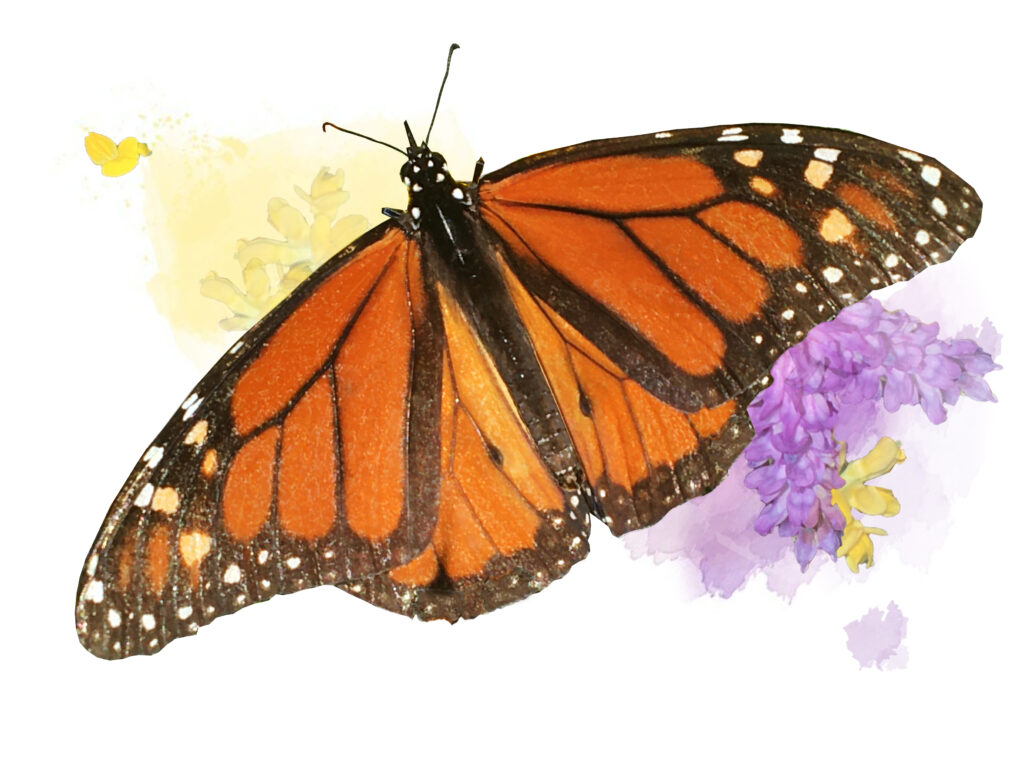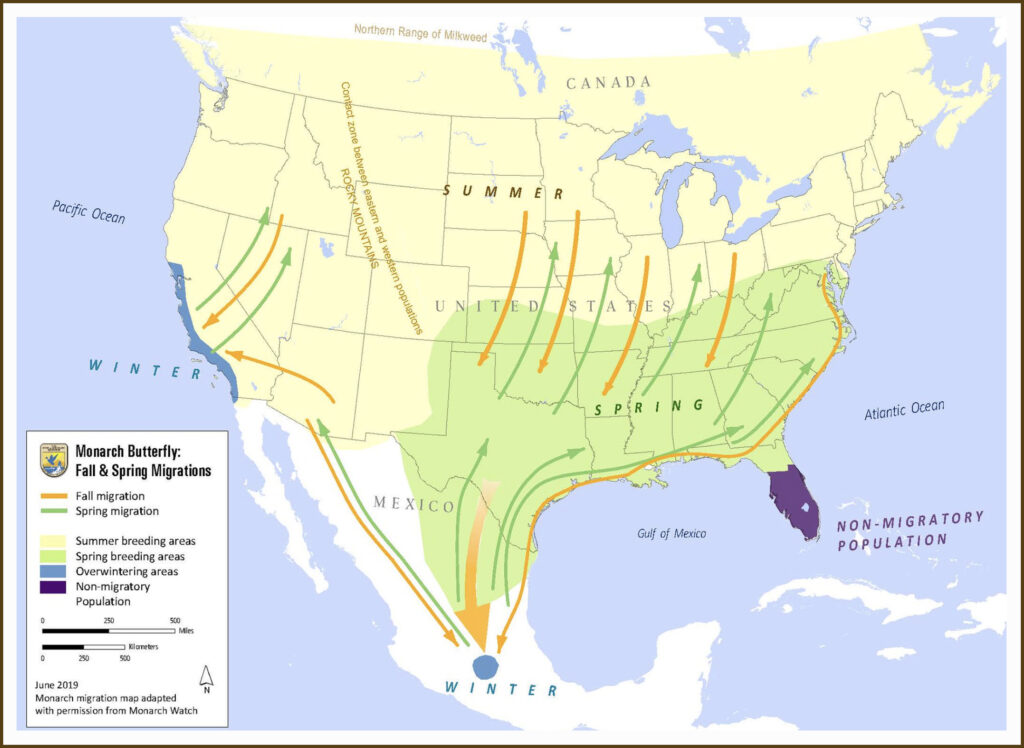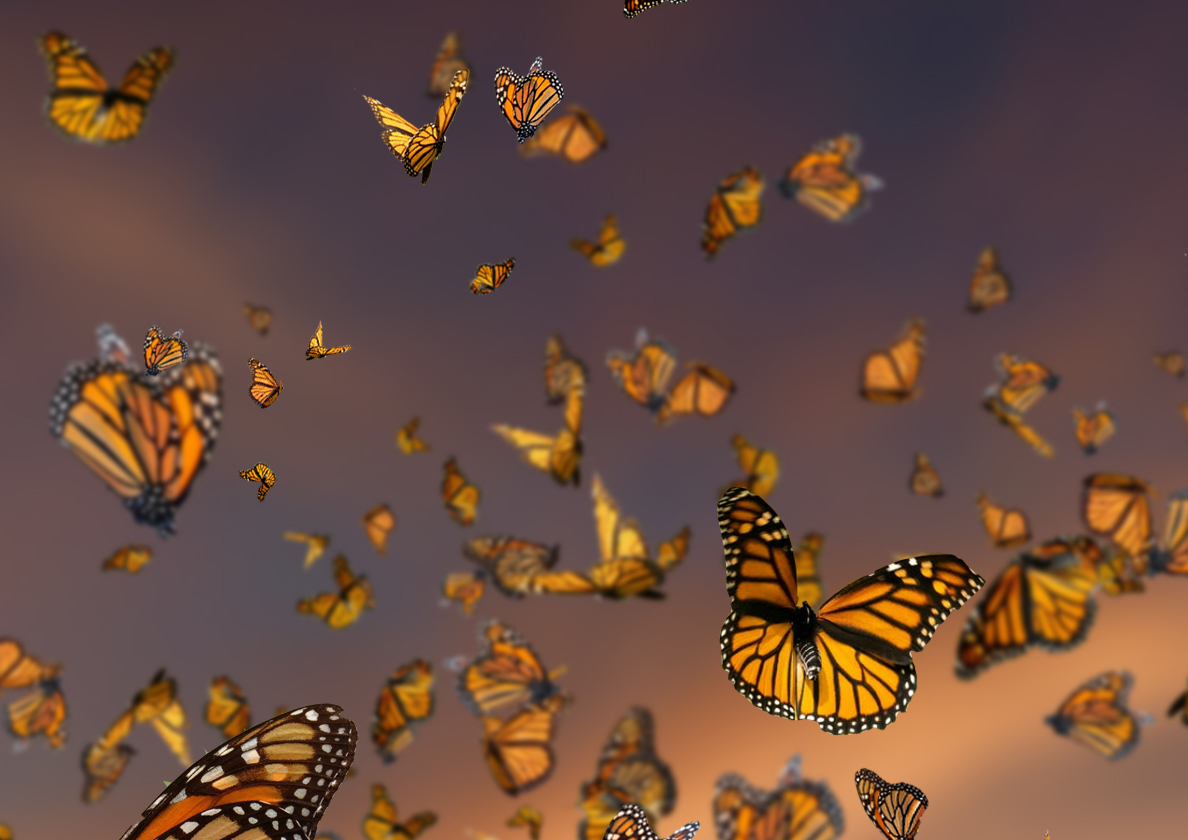
THE FALL OF A MONARCH
The Monarch butterfly was added to the International Union for Conservation of Nature’s Red List of Threatened Species as Endangered-only two categories away from Extinction-on July 21st, 2022.
Although small in stature, weighing less than a single gram, the fall of the reigning butterfly could be detrimental on our ecosystem, and may, in turn, impact our own food supply. Unless we attempt to break the fall of this extraordinary insect, and cushion it with milkweed.
“Millions of Monarchs: Welcome to Butterfly Forest” by Great Big Story.
Unique Specimen Faces the Brink
The bright orange and black monarch, scientifically known as Danaus plexippus plexippus, is a unique sub-species of butterfly, as it is the only butterfly to migrate like birds, heading south for the winter. Unlike birds, however, the butterflies will not return. A single monarch cannot survive the eight-month-long round trip with a life span of only a couple weeks. The international journey is a multi-generational phenomenon, during which the annual migrators collectively travel up to an astonishing 4,000 kilometres, from Southern Ontario to Central Mexico, then back again.
Along the way they find refuge at resting points, where they breed in fields and roost in forests before hibernating (or overwintering) on fir trees in Mexico. This remarkable migration faces many threats that are having a considerable impact on the species.

“Monarch migration map” by U.S. Fish and Wildlife Service – Midwest Region is licensed under CC BY 2.0.
CONTRIBUTING THREATS
- Habitat destruction, including illegal logging, and deforestation of overwintering sites
- Conversion of grasslands to farmlands
- Pesticide and herbicide use, which harms both the butterflies and their only host plant-milkweed
- Climate change, such as drought, frequent wildfires, extreme temperatures, and severe weather
These threats have contributed to the decline in population over the past few decades. In January 2002 alone, a single severe winter storm in Mexico’s overwintering sites killed over seventy-five percent of the population. They then plummeted between 2018 to 2019 by eighty-six percent, as stated in the research journal, Frontiers.
Currently, there is uncertainty as to whether such a heartbreaking decrease in population can even be reversed, since their population size is less than half it needs to be in order to avoid extinction.
The Butterfly Effect
It’s difficult to ignore these shocking numbers since monarchs play an important role in our daily lives, by not only gracing us with their beauty, but also by inspiring and educating young learners through up-close observations. Students learn about nature, life cycles, and the ecological intricacies of our food web-a threatened system monarchs have exposed.

As pollinators, butterflies are essential in maintaining a healthy ecosystem that produces flowers, fruits, and vegetables. Although butterflies are lower in the food chain the impact of their extinction would create a butterfly effect (pun intended), disrupting a complex system that could ripple into our own food network.
A Symbol Of Hope
While Monarchs have raised awareness of the decline of various pollinator populations, and have decreased by ninty-seven percent themselves over the last few decades, their popularity has grown. They have even recently appeared on a banknote-a place for the most esteemed.
Leaders of Canada, the United States, and Mexico have recognized the monarchs’ importance, agreeing to conserve their habitat, while other organizations have followed suit. However, politicians and executives aren’t the only ones who can help. Small contributions go a long way-think of the butterfly effect.
While government organizations work to conserve the landscape of the migratory route, we can contribute by planting milkweed in our own yards. Monarchs are a symbol of hope and rebirth, which is something they desperately need right now. With a collective effort we can give them that. We can save the monarchs-one planted milkweed at a time.
